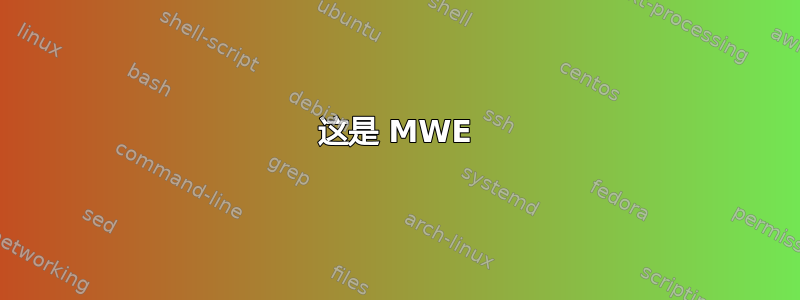
我的目标是拥有一个具有透明背景的标签,但任何穿过标签假设框的连接曲线都必须被隐藏。
不透明标签
\ncput*生成如下不透明标签。因此它不符合我的目标。
\documentclass[pstricks,multi]{standalone}
\usepackage{pst-eucl}
\begin{document}
\begin{pspicture}[showgrid=false](4,4)
\pstGeonode[PosAngle={90}]
(1,1){A}
(3,3){B}
\ncarc[arcangle=-30,linestyle=dashed,linecolor=gray]{A}{B}
\ncput*[nrot=:0]{$2\sqrt2$}
\end{pspicture}
\end{document}
透明标签
以下是我尝试模仿上述代码但标签背景为透明的尝试。但是,我没能模仿出连接曲线。
\documentclass[pstricks,multi]{standalone}
\usepackage{pst-eucl}
\begin{document}
\begin{pspicture}[showgrid=false](4,4)
\pstGeonode[PosAngle={90}]
(1,1){A}
(3,3){B}
\ncarc[arcangle=-30,linestyle=none]{A}{B}
\ncput[nrot=:0]{\psDefBoxNodes{obj}{$2\sqrt2$}}
\pcarc[arcangle=-30,linestyle=dashed,linecolor=gray](A)([nodesep=3pt]{A}obj:Cl)
\pcarc[arcangle=-30,linestyle=dashed,linecolor=gray]([nodesep=3pt]{B}obj:Cr)(B)
\end{pspicture}
\end{document}
如何解决这个问题?
答案1
我定义了一个宏,用于连接两个点的简单二次贝塞尔曲线。但是,我还添加了两个参数,以便您指定要绘制的贝塞尔曲线部分的起点和终点。
命令的参数是
\mybeziercurve[options]{<t-start>}{<t-end>}{<n-start>}{<n-control>}{<n-end>}
在哪里
t-start is a value between 0 and 1
t-end is a value between 0 and 1 (ideally larger than t-start)
n-start is the first node to be connected
n-control is a node to control the effect of the bezier curve
n-end is the second node to be connected
还有一个命令可以沿贝塞尔曲线放置一个点
\myputnodeoncurve{<pos>}{<node-start>}{<control-node>}{<node-end>}{<new-node>}
在哪里
pos should be a number between 0 and 1
other parameters are as for \mybeziercurve
请注意此实现要求您使用,pst-eucl因为我使用的pst-eucl是后记词典。
这是 MWE
\documentclass{article}
\usepackage{pstricks}
\usepackage{pst-plot}
\usepackage{pst-eucl}
\makeatletter
\newcommand{\@my@bezier@curve}[4]
{%
tx@EcldDict begin
%% x coordinate
1 #1 sub
1 #1 sub
/N@#2 GetNode 0 mul add mul
#1
/N@#3 GetNode 0 mul add mul add mul
%--
#1
1 #1 sub
/N@#3 GetNode 0 mul add mul
#1
/N@#4 GetNode 0 mul add mul add mul add
\pst@number\psxunit div
%% y coordinate
1 #1 sub
1 #1 sub
/N@#2 GetNode exch 0 mul add mul
#1
/N@#3 GetNode exch 0 mul add mul add mul
%--
#1
1 #1 sub
/N@#3 GetNode exch 0 mul add mul
#1
/N@#4 GetNode exch 0 mul add mul add mul add
\pst@number\psyunit div
end
}
\newcommand{\mybeziercurve}[6][]
{%
\def\@ParamStart{#2}%
\def\@ParamEnd{#3}%
\parametricplot[plotstyle=line,plotpoints=100,#1]
{\@ParamStart}{\@ParamEnd}{ \@my@bezier@curve{t}{#4}{#5}{#6} }
}
%% a macro to place a node on the curve for labeling purposes
\newcommand{\myputnodeoncurve}[5]
{%
\pnode( !\@my@bezier@curve{#1}{#2}{#3}{#4} ){#5}%
}
\makeatother
\pagestyle{empty}
\begin{document}
\begin{pspicture}[showgrid=false](0,0)(4,4)
\pstGeonode[PosAngle={-135,45,-45},
PointName={default,default,none},
PointSymbol={default,default,none}]
(2,1){A}
(3,3){B}
(3,1){C}
\pstRotation[RotAngle=130,PointName=none,PointSymbol=none]{A}{C}[D]
\pstTranslation[DistCoef=-1.5,PointName=none,PointSymbol=none]{C}{D}{C}[D]
\mybeziercurve[linecolor=black,linewidth=0.4pt,linestyle=dashed]{0}{0.35}{A}{D}{B}
\mybeziercurve[linecolor=black,linewidth=0.4pt,linestyle=dashed]{0.65}{1}{A}{D}{B}
\myputnodeoncurve{0.5}{A}{D}{B}{E}
\rput(E){$\sqrt{2}$}
\end{pspicture}
\end{document}

看起来更像你想要的东西
\begin{pspicture}[showgrid=false](0,0)(4,4)
\pstGeonode[PosAngle={-135,45,-45},
PointName={default,default,none},
PointSymbol={default,default,none}]
(2,1){A}
(5,5){B}
(5,1){C}
\mybeziercurve[linecolor=black,linewidth=0.4pt,linestyle=dashed]{0}{0.40}{A}{C}{B}
\mybeziercurve[linecolor=black,linewidth=0.4pt,linestyle=dashed]{0.60}{1}{A}{C}{B}
\myputnodeoncurve{0.5}{A}{C}{B}{E}
\rput(E){$\sqrt{2}$}
\end{pspicture}
您选择的位置控制点可以让你更好地塑造曲线。
您可以将以下内容添加到您的序言中:
%% command to get angle
\newcommand{\mygetangle}[2]
{ !
tx@EcldDict begin
/N@#2 GetNode 0 mul add
/N@#1 GetNode 0 mul add sub
/N@#2 GetNode exch 0 mul add
/N@#1 GetNode exch 0 mul add sub
exch
atan
end
}
然后你可以使用
\begin{pspicture}[showgrid=false](0,0)(4,4)
\pstGeonode[PosAngle={-135,45,-45},
PointName={default,default,none},
PointSymbol={default,default,none}]
(2,1){A}
(5,5){B}
(5,1){C}
\mybeziercurve[linecolor=black,linewidth=0.4pt,linestyle=dashed]{0}{0.40}{A}{C}{B}
\mybeziercurve[linecolor=black,linewidth=0.4pt,linestyle=dashed]{0.60}{1}{A}{C}{B}
%% Setting points to get slope of omitted section
\myputnodeoncurve{0.40}{A}{C}{B}{E1}
\myputnodeoncurve{0.50}{A}{C}{B}{E}
\myputnodeoncurve{0.60}{A}{C}{B}{E2}
\rput{\mygetangle{E1}{E2}}(E){$\sqrt{2}$}
\结束{pspicture}






